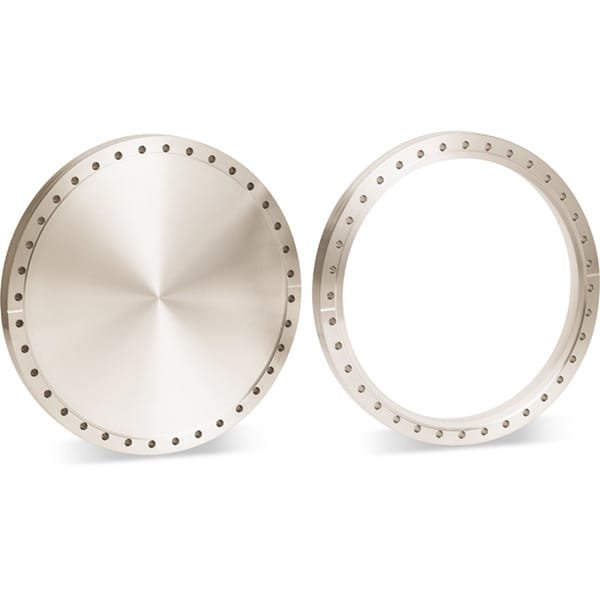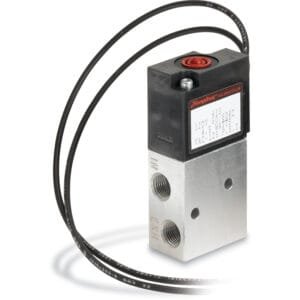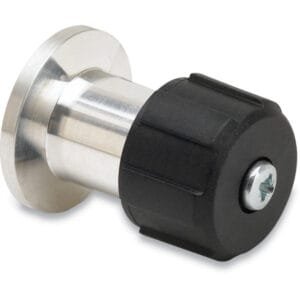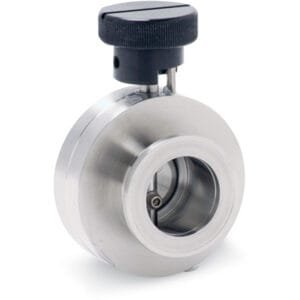DN200CF (10.00 OD) 316LN SS Standard ConFlat® (CF) UHV Flanges
Overview:
The DN200CF (10.00 OD) 316LN SS Standard ConFlat® (CF) UHV Flanges are precision-engineered for ultra-high vacuum (UHV) applications. Constructed from 316LN stainless steel, these flanges offer exceptional strength, corrosion resistance, and a reliable seal for high-performance vacuum systems. Designed to meet the rigorous demands of UHV environments, they are ideal for use in semiconductor, research, and industrial vacuum systems.
Product Features:
Material: High-quality 316LN stainless steel, providing enhanced strength and resistance to corrosion
Outer Diameter (OD): 10.00 inches
Flange Type: Standard ConFlat® (CF)
Vacuum Rating: Capable of supporting ultra-high vacuum (UHV) conditions
Surface Finish: Precision-machined for smooth, contaminant-free surfaces, ensuring tight seals and minimal outgassing
Design Options: Available in both rotatable and fixed configurations to suit different system requirements
Sealing Compatibility: Compatible with copper or metal seals to ensure leak-proof operation
Applications:
Semiconductor Manufacturing: Perfect for use in cleanrooms and environments where UHV conditions are critical for chip fabrication processes
Scientific Research: Ideal for high-energy physics, material science, and space research requiring UHV for experiments
Aerospace & Space Technology: Used in vacuum chambers, satellite components, and other space-related applications
Vacuum Chambers: Essential for maintaining a stable and contaminant-free environment in laboratory and industrial systems
Advanced Technology Systems: Designed for systems that demand precise, reliable vacuum performance
Advantages:
Enhanced Durability: 316LN stainless steel ensures excellent resistance to corrosion, making it suitable for harsh vacuum environments.
Optimal Sealing: Provides a leak-free seal, even under extreme vacuum conditions, thanks to its precision design and compatibility with various seal types.
Flexible Design: Available in both rotatable and fixed designs, allowing easy integration into various vacuum systems.
Reliable Performance: Well-suited for high-temperature and low-temperature environments typical in UHV applications.
Long-Term Stability: These flanges maintain their sealing performance and integrity over extended periods, making them ideal for long-term UHV operations.
Manufacturing Process:
These flanges are manufactured using a cold-pressing and sintering process to achieve a high-density, uniform structure. Each flange undergoes thorough cleaning to remove contaminants before packaging, ensuring they are ready for immediate use in vacuum applications. The products are carefully packaged to prevent any damage or contamination during shipping.
Ordering Table
| Flange Size/OD | Type | Flange Material | Part Number |
| DN200CF (10.00" OD) | Fixed | 316LN SS | F1000N000NLN |
| DN200CF (10.00" OD) | Fixed Tapped | 316LN SS | F1000N000NMLN |
| DN200CF (10.00" OD) | Rotatable | 316LN SS | F1000N000RLN |
| DN200CF (10.00" OD) | Rotatable Tapped | 316LN SS | F1000N000RMLN |
| DN200CF (10.00" OD) | Rotatable Tapped | 316LN SS | F1000N000RTLN |
| DN200CF (10.00" OD) | Fixed Tapped | 316LN SS | F1000N000TLN |
| DN200CF (10.00" OD) | Fixed | 316LN SS | F1000N800NLN |
| DN200CF (10.00" OD) | Fixed Tapped | 316LN SS | F1000N800NMLN |
| DN200CF (10.00" OD) | Rotatable | 316LN SS | F1000N800RLN |
| DN200CF (10.00" OD) | Rotatable Tapped | 316LN SS | F1000N800RMLN |
| DN200CF (10.00" OD) | Rotatable Tapped | 316LN SS | F1000N800RTLN |
| DN200CF (10.00" OD) | Fixed Tapped | 316LN SS | F1000N800TLN |





Reviews
There are no reviews yet.